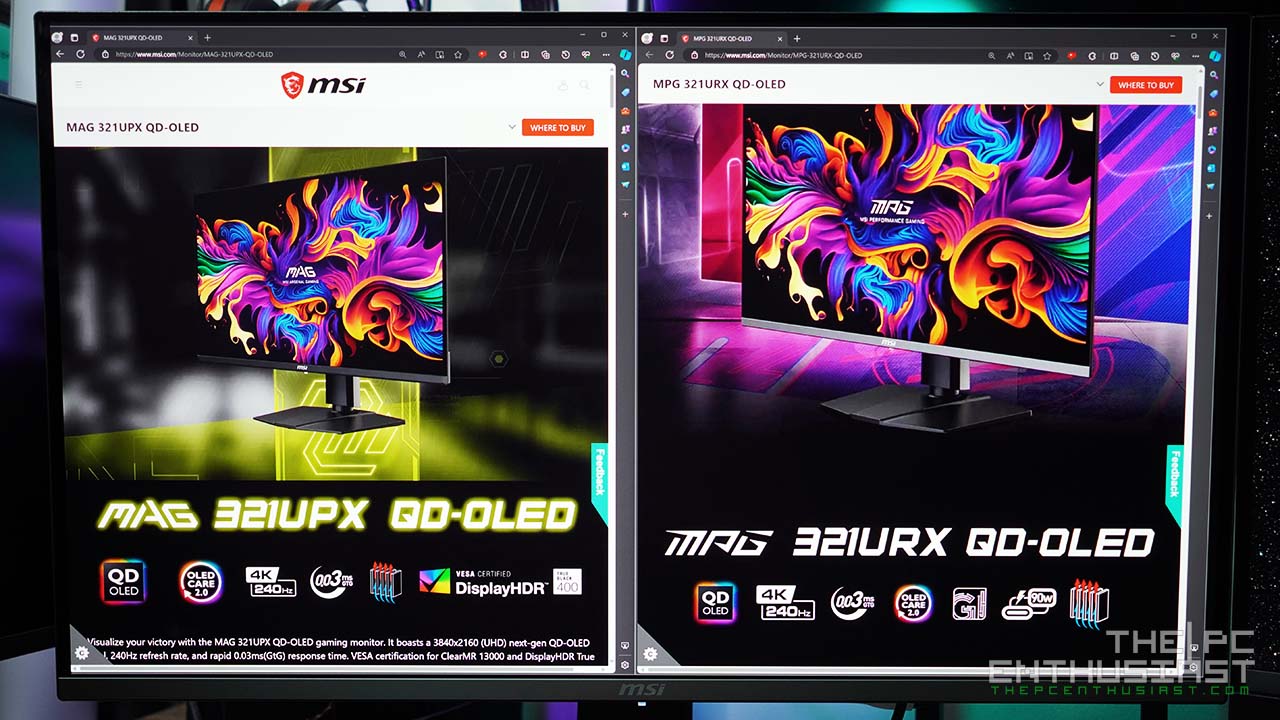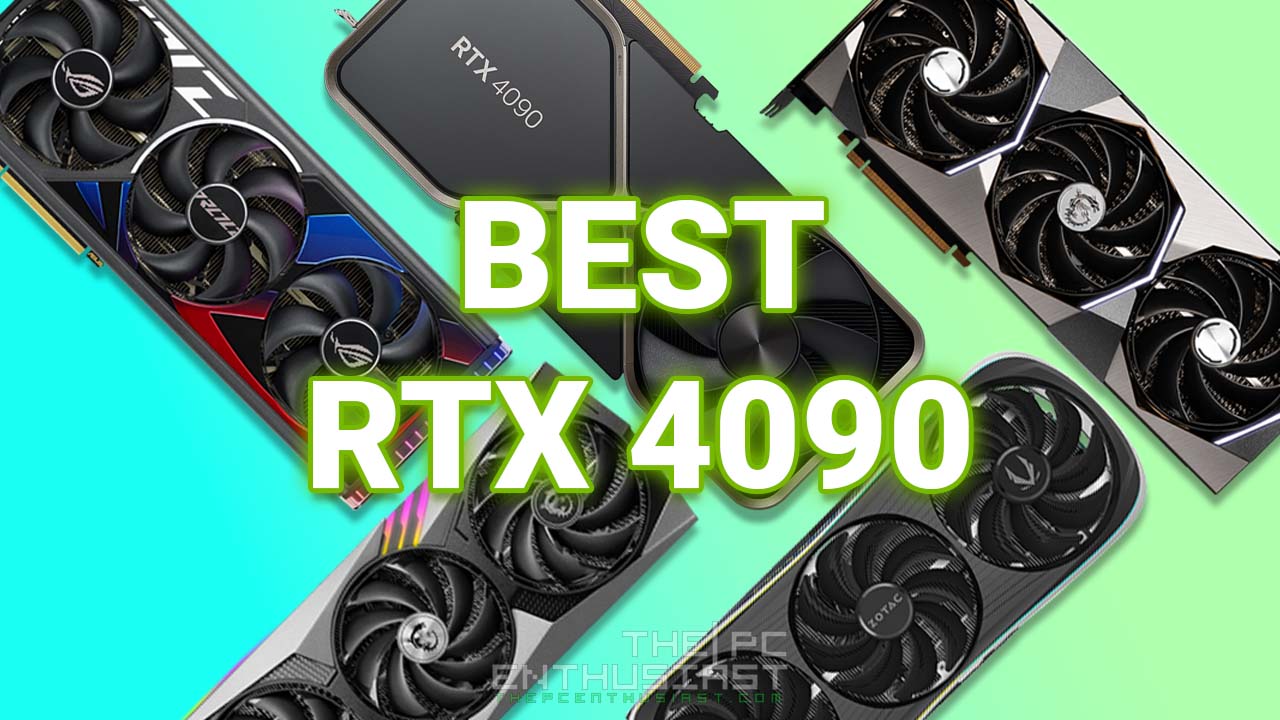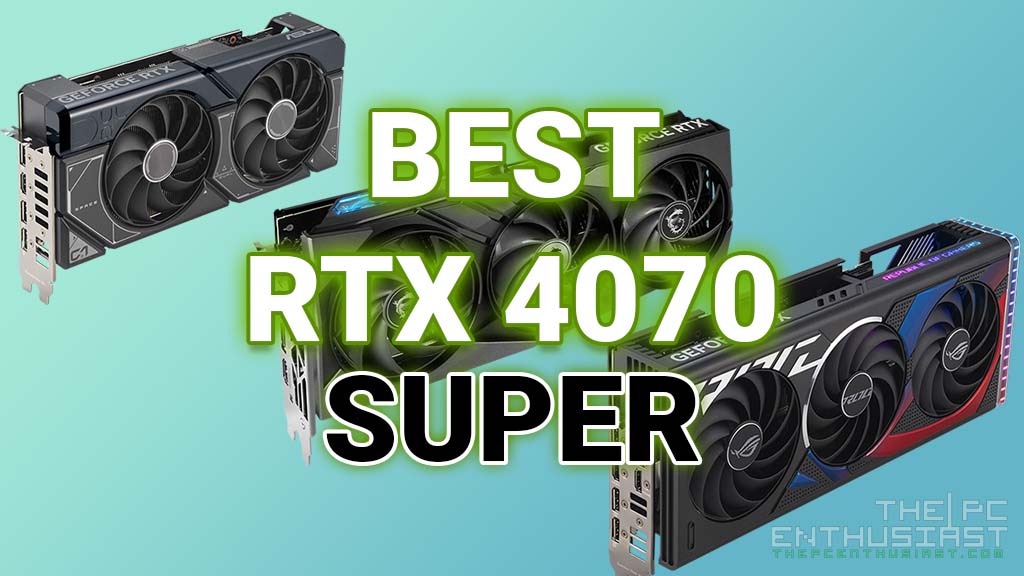Dual QHD ultrawide OLED monitors based on Samsung’s 2nd generation OLED panels are now available. We learned from our review of MSI’s 4K 240Hz QD-OLED that the latest OLED panels offer better image and text clarity, aside from faster refresh rates. For those seeking an ultrawide curved OLED monitor with a resolution of 5120×1440, we listed some of the best 49-inch dual QHD OLED monitors available today. These are excellent monitors for gaming, especially simulation or racing games, media consumption, and multitasking or productivity. Check out our handpicked OLED monitors below.

Samsung 49″ Odyssey OLED G9 G95SC and G93SC Ultrawide OLED Monitors
Samsung was the first to release a dual QHD (gaming) monitor that uses 2nd generation QD-OLED panels. Samsung’s Odyssey G9 monitors are the only OLED monitors in this list that can do up to 240Hz refresh rate. Combined with Samsung’s Neo Quantum Processor Pro, this monitor offers an intriguing viewing experience with deep blacks and vibrant colors.


Aside from its 1800R curved 49-inch display size and 5120×1440 resolution, it has a 110 PPI density. A super low response time of 0.03ms GtG complements the fast 240Hz refresh rate. It also supports various technologies like G-Sync compatibility, AMD FreeSync Premium Pro, DisplayHDR True Black 400, and even HDR10+.
G95SC vs G93SC – The Difference
As I mentioned in the title, there are two models of Samsung’s Odyssey OLED G9 monitors, the G95SC and the G93SC. Comparing the Samsung Odyssey OLED G9 G95SC to the G93SC, the G93SC misses out on some smart features. Unlike the slightly more expensive G95SC, the G93SC has no processor, operating system, or access to the Gaming Hub and Game Bar 2.0.


The G93SC also skips out on Smart TV Apps, IoT Hub, Voice Assistance, and Multi View capabilities. Plus, you won’t find the handy remote control that’s included with the G95SC. At the time of writing, there’s only a $100 difference between the two Odyssey OLED G9 monitors. It’s your call to decide if the additional features are valuable and applicable to your specific needs.
Where to buy: (#ad)
Samsung 49″ Odyssey OLED G9 (G95SC) on Amazon here.
Samsung 49″ Odyssey OLED G9 (G93SC) on Amazon here.
ASUS ROG Swift PG49WCD 49″ QD-OLED Ultrawide Gaming Monitor
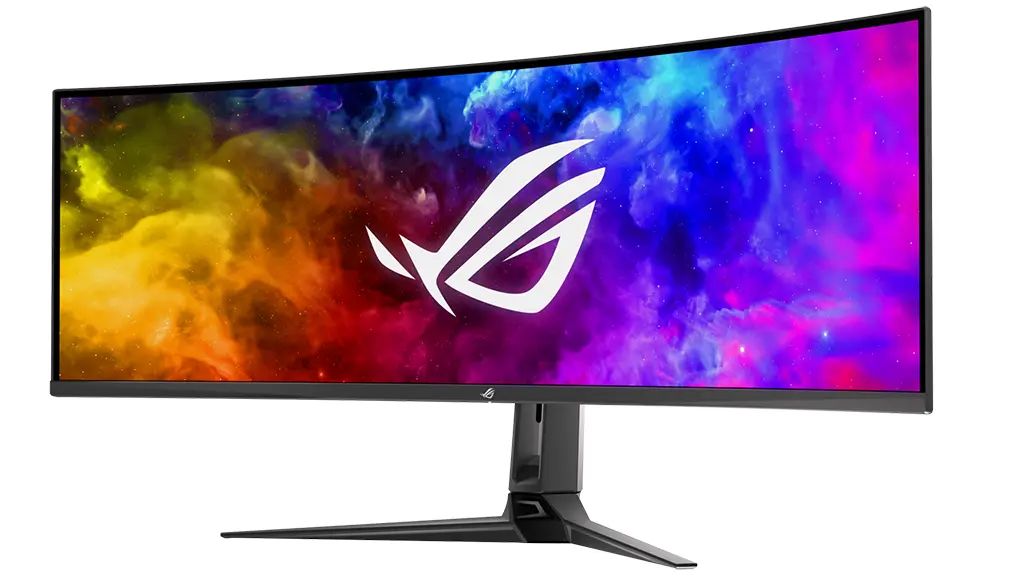

Asus announced and released several kick-ass OLED gaming monitors this year. One of these OLED monitors is the ROG Swift PG49WCD, a 49-inch curved dual QHD QD-OLED gaming monitor. Like the rest of the OLED monitors in this list, the PG49WCD features a 5120×1440 resolution, 0.03ms GtG response time, 144Hz refresh rate, 1800R curvature, etc.
Aside from the common features, the 49″ ROG Swift PG49WCD features a cinema-grade 99% DCI-P3 color gamut and Delta E < 2 calibration, ensuring lifelike and accurate colors. It also features an ROG Smart KVM, which is excellent if you connect multiple devices on the monitor. For a tear-free and smooth gaming experience, the PG49WCD is G-Sync compatible and features AMD FreeSync Premium Pro technology.

Now, the ROG Smart KVM is a really neat and useful feature. It lets you easily switch between two devices using the same keyboard and mouse without needing extra equipment. Just connect and you can quickly move between tasks or even drag and drop files between devices, thanks to fast USB 3.2, making file transfers much quicker than older USB versions. Speaking of USB, it also has USB Type-C with 90W power delivery (PD).
The ASUS ROG Swift PG49WCD is capable of 1000 nits peak brightness (3% with HDR on) and uniform brightness, in addition to DisplayHDR 400 True Black. To prevent or minimize the risk of OLED burn-in, the PG49WCD features Asus OLED care. This feature includes a custom heatsink, improved airflow, and Graphene film for cooling. And if I am correct, Asus is offering a three-year warranty for the said monitor.
Where to buy:
ASUS ROG Swift PG49WCD on Amazon here.
MSI MPG 491CQP QD-OLED 49″ Ultrawide Curved Gaming Monitor



Asus is not the only company that sells some of the best dual QHD OLED monitors in the market. MSI also has one, and it’s called the MPG 491CQP. MSI’s MPG 491CQP is almost similar to Asus’ PG49WCD. They have a lot in common. For example, they have the same panel type, resolution, curvature, 144Hz refresh rate, response time, TrueBlack HDR 400, Type-C port, KVM feature, OLED care, and a 3-year warranty.
The main difference lies in the general aesthetics and design of the monitor and proprietary apps; MSI has its own OLED Care 2.0 and Gaming Intelligence App. While Asus’ QD-OLED monitor may have an advantage in some areas, the ROG Swift PG49WCD is the most expensive on this list. MSI’s monitor is priced similarly to Samsung’s Odyssey OLED G9 G93SC.
Where to buy:
MSI MPG 491CQP QD-OLED on Amazon here.
Gigabyte Aorus CO49DQ 49″ Dual QHD QD-OLED

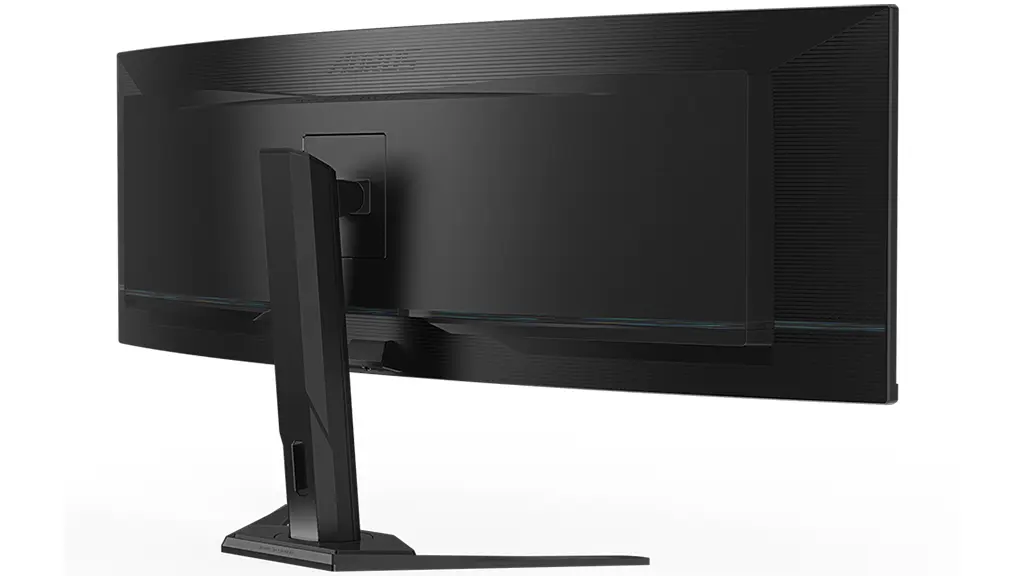
When writing this round-up article, Gigabyte’s Aorus CO49DQ went up for sale. The Aorus CO49DQ is similar to MSI’s MPG 491CQP, with a very minor difference. For example, the Aorus CO49DQ has a built-in 5W speaker, but it only has a USB-C PD 18W, unlike MSI’s PD 90W. However, the Gigabyte’s Aorus CO49DQ is more expensive, with a retail price of $1,299.99.
If you are willing to spend more, I think Asus’ dual QHD is much better. However, if you want to save some cash, MSI’s 491CQP or Samsung’s Odyssey G93SC is the smarter choice.
Check Gigabyte Aorus CO49DQ on Amazon here.
Best Ultrawide OLED Monitor: Quick FAQs
A dual QHD monitor combines two Quad HD (2560×1440) displays into one ultra-wide display, offering a seamless 5120×1440 display. This bezel-free, expansive screen is ideal for multitasking workloads. Aside from multitasking, it’s also an excellent monitor for gaming and media consumption, provided that the media you consume and the games you play can take advantage of the wide real estate.
Before getting one, there are a few things you need to consider. Dual QHD is not a budget monitor, and these QD-OLED dual QHD monitors usually retail for around $1,000. You also need an ample, wide desk space for a 49-inch super ultrawide monitor.
If you play racing games, simulations, and games supporting a 32:9 aspect ratio, these 49″ Dual QHD QD-OLED gaming monitors would be an excellent choice. However, you’ll need a powerful graphics card. An entry-level to mid-range GPU won’t cut it and may negatively affect your gaming experience. We recommend a fast GPU like NVIDIA’s RTX 4090, RTX 4080 (Super), or AMD’s RX 7900 XTX.
Of course, depending on how graphics-intensive the games you play or what graphics settings you use, you may get playable frame rates with GPUs like NVIDIA’s RTX 4070 Ti (Super) or AMD’s RX 7900 XT.
If you work heavily with static text, graphs, or windows, an OLED panel may not be the best choice due to the risk of burn-in. However, the companies above offer a 3-year burn-in, and most of these ultrawide curved OLED monitors have protection features.
It is also a personal preference since IPS panels still produce much sharper text and image clarity. However, the second-generation panels are greatly improved to the point that fringing is almost non-observable. We have a comparison of the text clarity of a QD-OLED vs. IPS in our review.

